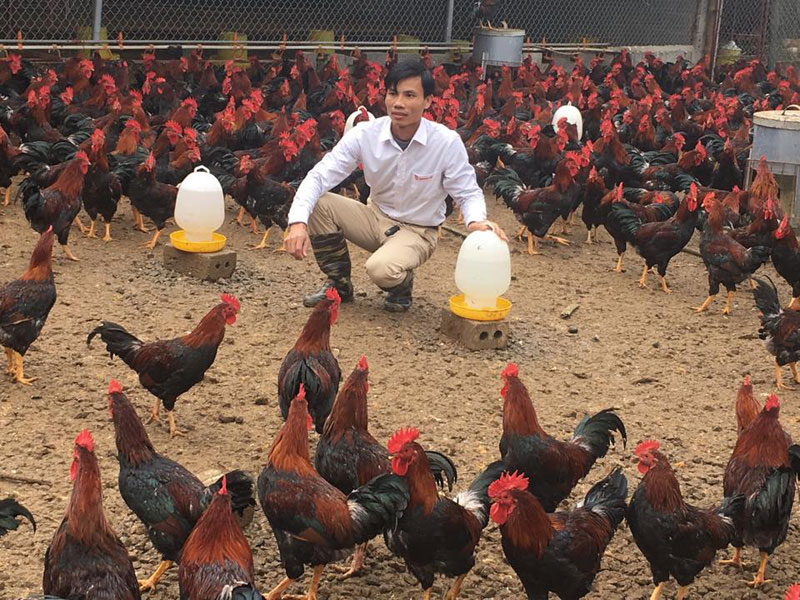



Mr. Bui Van Giang, An Binh Commune (Lac Thuy) invests in raising poultry with a size of 10 thousand animals.
In An Son Hamlet, An Binh Commune, Mr Bui Van Giang is known as the owner of the hatching and supplying chicken farm in Lac Thuy. In 2012, he bravely used all the saving money and bank loans to invest in the establishment of a farm with a scale of 8,000 to 10,000 breeding and broiler chickens each year. In order to develop livestock production, he cooperated with local farmers to supply eggs to his hatchery. From self- finding the consumption source in the market, up to now, his chicken farm has provided chicken breeders and broilers throughout the country. With prestigious business methods, organizations, individuals, households often visit his farm by themselves to order. In 2017, with the big revenue, after deducting all expenses, he earned a profit of over 1 billion VND.
Mr. Bui Van Giang is one of the typical individual households investing in animal husbandry in An Binh commune. In addition, the district focuses on attracting more investment outside. Specifically, there are some investors such as Hoa Phat Breeding joint Stock Company, Japfacomfeed Limited Company, NCK joint Stock Company, Vietnam CP joint Stock Company, etc. These companies and enterprises have invested in raising commercial and breeding chickens, pigs with the scale of each farm of 2,000 - 3,000 or more for pigs, ten thousand or more for chickens.
The district has been implementing a number of mechanisms to attract investment in the livestock sector, such as supporting the construction of biogas plants, biological pads, breeding support, buying more cattle and pig for breeding, supporting the purchase of chickens, ducks and wild geese for backup. The total budget for supporting programs to raise livestock productivity is nearly VND 8 billion, especially the construction of livestock waste treatment facilities is about VND6.2 billion. Also the strong investment of organizations and individuals inside and outside the province in the field of animal husbandry has contributed to large production, contributing to the change of production thinking and restructuring of livestock production in line to meet the requirements of the consumer market. Up to now, the livestock sector accounts for 20.9% of the agriculture, forestry and fishery sector. The district has a total of 53,600 pigs, 750,000 poultry, 7,200 goats and over 11,300 buffaloes.